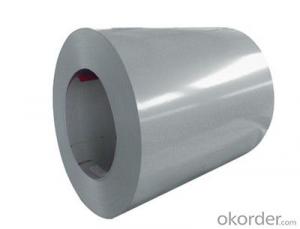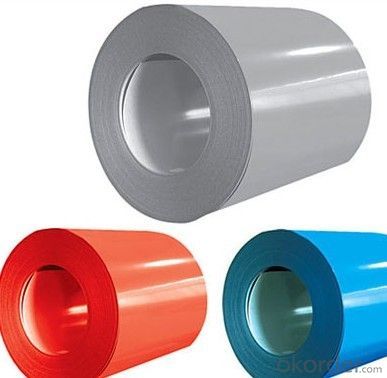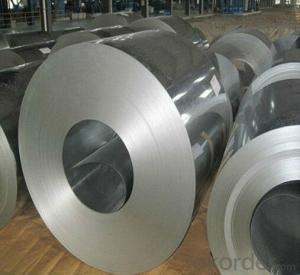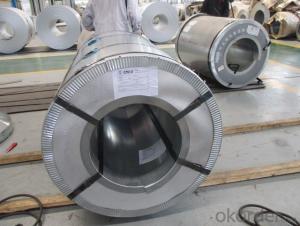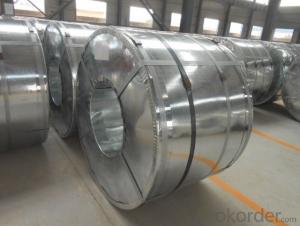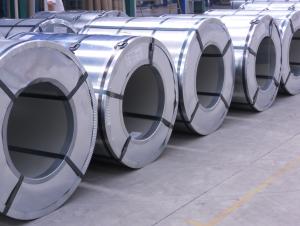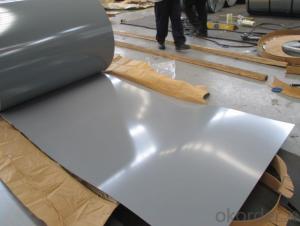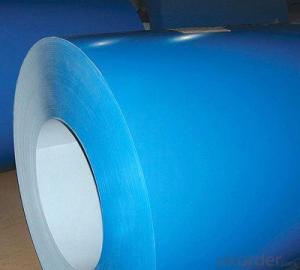Pre-painted Steel Plate JIS3312 CGCC for Indoor
- Loading Port:
- China main port
- Payment Terms:
- TT OR LC
- Min Order Qty:
- 50 m.t.
- Supply Capability:
- 5000 m.t./month
OKorder Service Pledge
OKorder Financial Service
You Might Also Like
Description
JIS G3312, CGCC, DX51D AZ PPGL Prepainted Color Steel Coils / Coil for buildings, vehicles
Main Feature
Stain Resistant/Self Cleaning Capability/High Thermal Resistance/Antistatic Capability/Sterilizing Capability/Finger-print Prevention
PE color coated steel products
Using the latest improvement of the polyester coating (Polyester, abbreviated PE) as the top layer (Topcoat) The double-sided two Tu two bake (2C2B) process production. Direct exposure to the general environment, the corrosion life of up to 7-8 years, but in an industrial environment or serious pollution of the sea area and its service life will be relatively lower.
Recommended use
Suitable for roofing, siding or garage, storage room and downspouts general light industrial, commercial, residential, suburban, rural and other buildings of the like.
Images
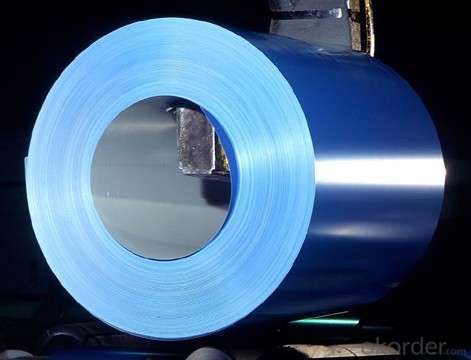

Specification
Base Material: HDGI,ALUZINC,CR
Grade: SGCC,DX51D,ASTMA653,EN10142,S350GD
Thickness: 0.2-0.8mm
Width: 600-1250mm
Zinc Coating:60-200g/m2
Paint: PE,PVDF,SMP,HDP
Coil ID: 508
Coil Weight: 3-6mt
JIS3312 CGCC
FAQ of Package
SStandard export packing, 4 eye bands and 4 circumferential bands in steel, galvanized metal fluted rings on inner and outer edges, galvanized metal and waterproof paper wall protection disk, galvanized metal and waterproof paper around circumference and bore protection
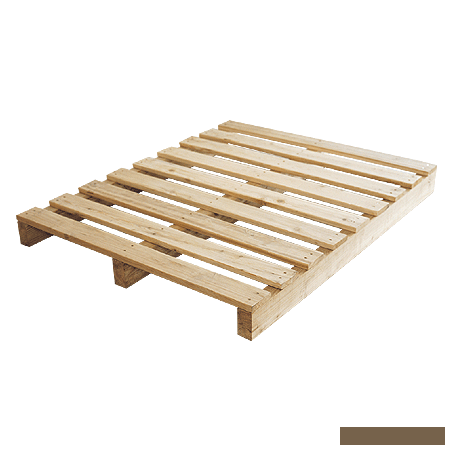
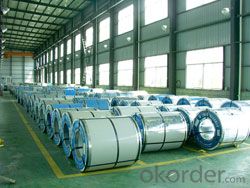
- Q: What is the maximum width of a steel coil?
- The maximum width of a steel coil can vary depending on factors such as manufacturing capabilities and customer requirements. However, in general, steel coils can have a maximum width ranging from 30 inches to 96 inches or even wider.
- Q: How are steel coils used in the production of steel rings?
- Steel coils are used in the production of steel rings by being shaped and cut into the desired dimensions. The coils are unrolled and passed through a series of machines that shape the steel into a circular shape. The steel is then cut to the required size and welded together to form the steel rings.
- Q: i have a question on a test and the questions before it are about blast furnace, wrought iron and cast iron...question 16 is..What is Steel?i dont really get what im being asked.. there could be many answers, what answer are they looking for?
- as steel is an alloy i thinkl they are looking for what elements it is made up of
- Q: What are the common tests performed on steel coils?
- The common tests performed on steel coils include dimensional inspection, visual inspection, tensile testing, hardness testing, bend testing, and surface quality assessment. These tests ensure the quality, strength, and integrity of the steel coils before their use in various applications such as construction, automotive, and manufacturing.
- Q: who are the 7 best steel guitar players ever?
- I would have to put Lloyd Green and Buddy Emmons at the top of the list for virtuoso instrument playing mastery, technical expertise and versatility, adapting steel guitar to most any kind of music they were in studio to lay tracks for. Certainly, Pete Drake, and Weldon Myrick belong at the top of the best of the Nashville Session steel players for the last 50 years or more. While Leon McAuliffe and Roy Wiggins in the 1930's and 40's pioneered and paved the way for the country music steel guitarists coming along in the 50's 60's; we cannot leave this list without crediting the virtuoso technical and musical versatility of much later steel guitarists, whom have been the top-drawer, first-call session players in Nashville studios for the last 30 years or so. Namely, the best of the Nashville Session Steel players: Paul Franklin Jr. That's how my votes would stack-up, of the 7 best steel guitar players, ever! Thank you for a fun question to muse over and answer! Sincerely, Jazz Me109 PS: When editing what I've written above, I found it amusing and quite interesting that Paul Franklin, Jr. wound-up at the bottom of my list, when indeed he should be at the top of the list! I guess I feel that way about all of the steel guitar masters, that I've listed here, though! Oh well!...Have a great day! :)
- Q: Looking for a new entry door for my home If someone would explain the features and benefits of both fiberglass and steel doors I would greatly appreciate it!!
- Fiberglass doors insulate better than the steel doors and they do not dent or rust. Go with fiberglass.
- Q: I was curious to what type of steel I should get if I wanted something that kept its edge longer than 154cm but is still just as stainless. I don't know much about knife steels inform me please?
- 154cm is a very good knife steel, the problem is in the heat treating. Stainless should be cryo treated to get all it can offer. That being said, if you really want to drop some coin, look at getting one made from CPM 440V. Stainless isn't as strong as carbon but on a smaller knife works well. You might also look for D-2 Tool steel. There are factory knives that are made of that.
- Q: what is the densest type of steel ? what is its density ?what is its tensile strength .
- The density of steels ranges from about 7.7 to a bit over 8.0 g/cm^3, depending on the specific type. Some of the tool steels (a group that contains alloying elements such as cobalt, molybdenum, and tungsten) and some of the stainless steels tend to be the most dense. Steels are a very large family of alloys, having in common that iron is the principal ingredient (They are iron-based, and ALL steels are mostly iron, by definition. Nickel-based superalloys such as inconel and hastelloy are therefore not steels). There are other elements present in steel - usually carbon, at a minimum. The range of carbon content for ordinary steels runs from a trace (~.1% or so) up to a maximum of 2%, theoretically, though actual carbon contents above 1% are fairly rare. Many other elements may be added to produce various types of steels having specific properties. In corrosion-resistant steels, carbon is usually present in only minute quantities, with chromium (400 series) or chromium plus nickel (300 series) being the major alloying additions. In the 400 series grades that can be hardened by heat treatment, hardening is accomplished though the combined effects of the carbon and chromium. The 300 series alloys can be hardened (and strengthened) only through cold working (strain hardening). Density has no direct relationship to tensile strength, BTW.
- Q: What are the common surface treatments for galvanized steel coils?
- Some common surface treatments for galvanized steel coils include passivation, chromate conversion coating, and painting. Passivation helps to enhance the corrosion resistance of the galvanized coating, while chromate conversion coating provides additional protection and improves adhesion for subsequent paint coatings. Painting can be done to enhance aesthetics or to provide additional corrosion protection, depending on the specific requirements of the application.
- Q: Are they made using the same processes, or is tempered steel made without the quenching process?
- No. Not quite. The term 'Hardened steel' is often used to refer to 'Heat treated steel'. There are two separate steps in heat treatment. First the red hot steel is 'quenched' (rapidly cooled). This yields maximum hardness ,but the steel may be too brittle for the intended purpose. The next stage, 'tempering' is heating to a limited temperature, and slow cooling. This reduces the hardness somewhat, depending on the re-heat temperature, but restores some of the toughness lost in the first stage.
Send your message to us
Pre-painted Steel Plate JIS3312 CGCC for Indoor
- Loading Port:
- China main port
- Payment Terms:
- TT OR LC
- Min Order Qty:
- 50 m.t.
- Supply Capability:
- 5000 m.t./month
OKorder Service Pledge
OKorder Financial Service
Similar products
Hot products
Hot Searches
Related keywords
